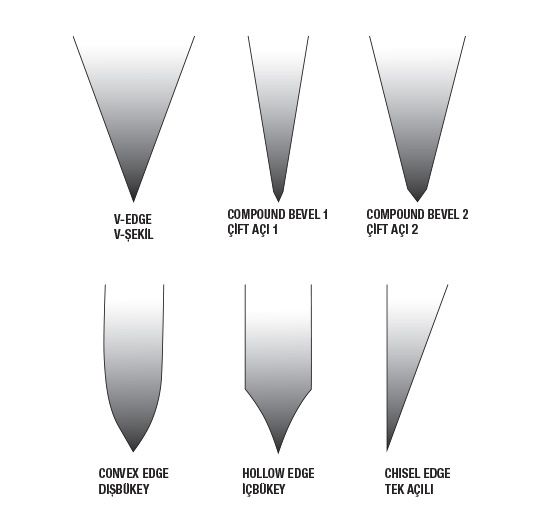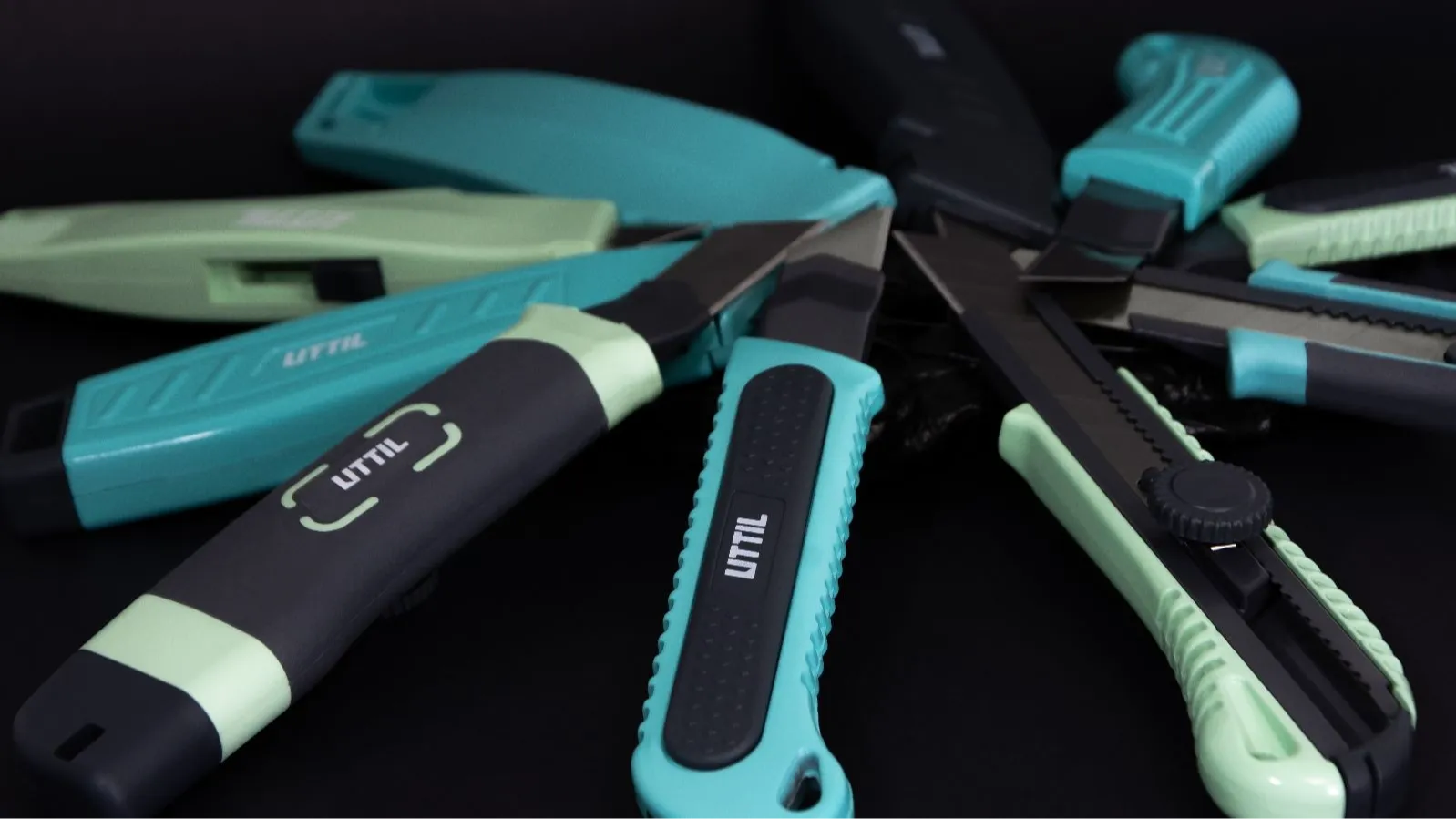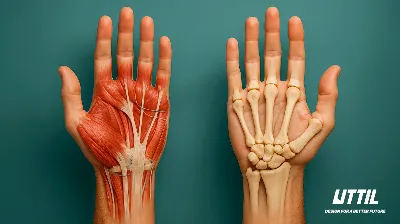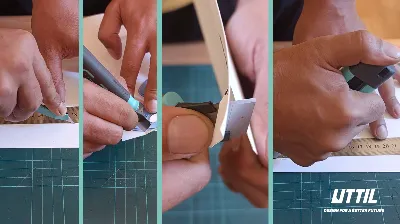How To Choose The Right Model Utility Knife?
Choosing the right utility knife depends on your intended use and personal preferences. Here are some factors to consider when selecting a utility knife:
Blade Type
Utility knives come in a variety of blade types, including straight-edged, serrated, or a combination of both. Straight-edged blades are ideal for cutting softer materials such as paper or leather, while serrated blades are better for harder materials such as rope or fabric. In addition, straight-edged blades can have different edge sharpening shapes and thicknesses depending on their application. Sharpening shapes are generally V-shape (flat), compound edged, chisel type, convex or hollow ground. These forms are closely related to the material to be cut and the nature of the use of the blade. While double angle sharpening provides precise cutting for very sensitive thin paper cuts, V-shape will be sufficient and more durable for opening corrugated cardboard boxes, convex sharpened blades offer the most comfortable use for filleting or similar operations, on the other hand, single angle sharpened blades provide more durable and easy to control cuts in woodworking or scraping.

Blade Size
Blade sizes vary, ranging from small pocket-sized blades to larger blades designed for heavy-duty tasks. Consider what types of materials you will be cutting and how frequently you will be using the knife when selecting a blade size.
Handle Design
The handle of a utility knife should be comfortable and provide a secure grip. It is recommended to choose handles made of materials that feel comfortable in your hand and have a slip-resistant texture. Although metal handles are considered ideal for heavy work and working environments and plastic handles for medium and light work, new material technologies and ergonomic findings have left this old approach behind. In addition to being suitable for the nature of the work to be done, handles that will not slip out of hand, can be easily controlled and can be safely store the sharp tip when it is not used should be preferred.
Blade Material
The most common materials for utility knife blades are stainless steel and carbon steel. Stainless steel blades are more resistant to corrosion, while carbon steel blades tend to be harder and hold their edge longer.
Locking Mechanism
Some utility knives have a locking mechanism to keep the blade securely in place during use. This can be useful for safety and precision when cutting.
Utiliy Knife - Box Cutter Prices
Utility knives are available in a wide range of price ranges, from economical options to high-end models. When choosing a utility knife, consider how often you will use it, where you will use it and how long you will keep it.
Overall, choosing the right utility knife depends on your specific needs and preferences. Consider these factors when selecting a knife, and don't be afraid to try out different models until you find the one that works best for you.
Based on the latest ergonomic data, UTTIL designs and develops utility knives with the highest price-performance gain that you can use for many purposes for a long time. With UTTIL hand tools you can work in the same quality for many years.








